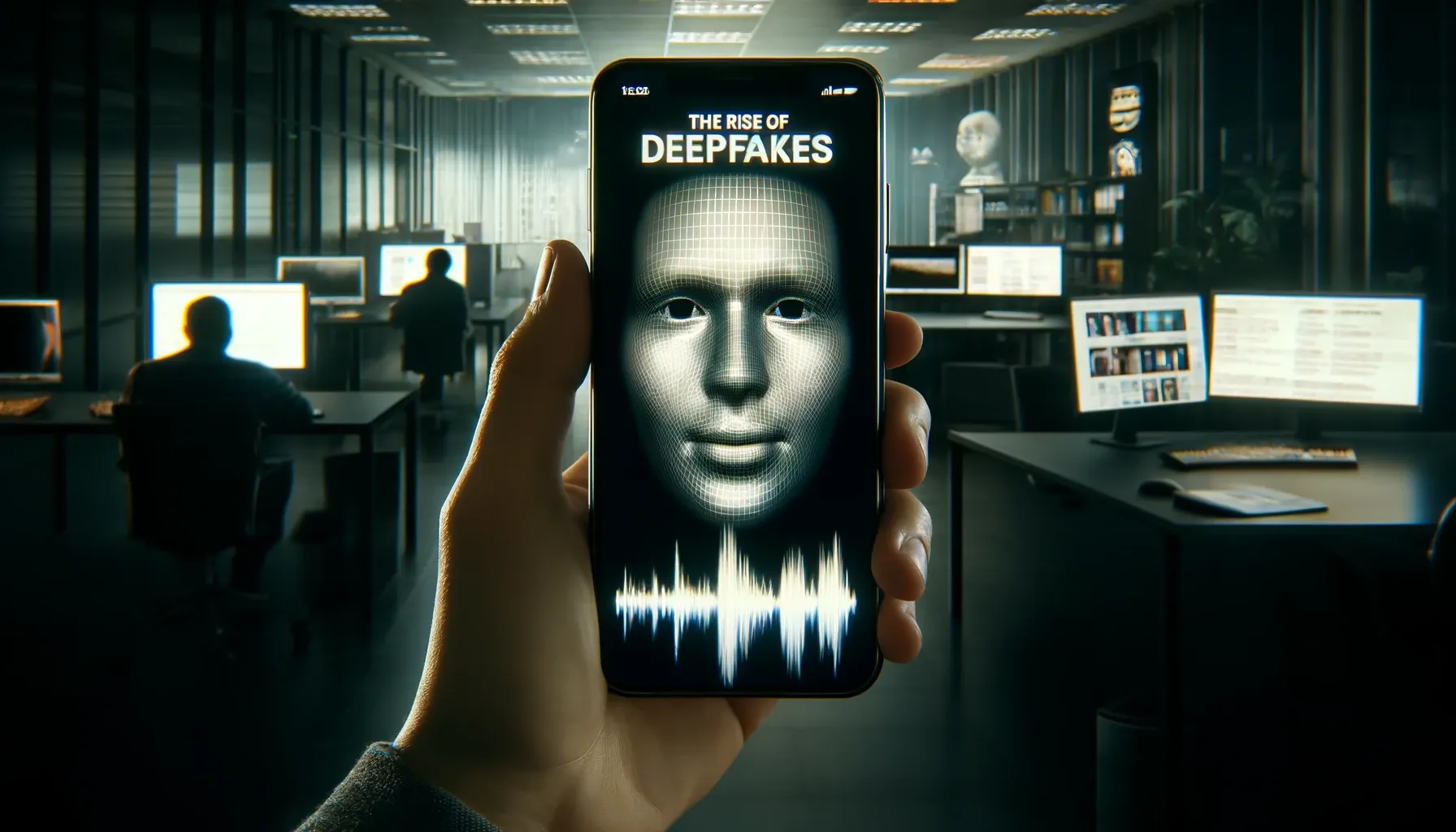
The Rise of Deepfakes: A New Era for Vishing Calls
2024-06-12
The Rise of Deepfakes: A New Era for Vishing Calls
Introduction
Deepfakes, AI-generated synthetic media, have revolutionized the way we perceive and interact with digital content. Initially popularized through manipulated videos and images, deepfakes have now ventured into the realm of audio, posing significant risks to security and privacy. One of the most concerning applications of deepfake technology is its use in vishing (voice phishing) calls. In this article, we explore the capabilities of deepfakes, their impact on vishing, and strategies to defend against this emerging threat.
Understanding Deepfakes
Deepfakes leverage advanced machine learning techniques, particularly deep neural networks, to create highly realistic synthetic media. The two main types of deepfakes relevant to vishing are:
- Video Deepfakes: AI-generated videos where the face and voice of a person are convincingly altered.
- Audio Deepfakes: AI-generated audio that mimics a person's voice with remarkable accuracy.
The Technology Behind Deepfakes
Deepfake creation involves several key technologies:
- Generative Adversarial Networks (GANs): GANs consist of two neural networks—the generator and the discriminator—that work together to create and refine synthetic media. The generator creates fake content, while the discriminator evaluates its realism. Over time, the generator produces increasingly convincing deepfakes.
- Voice Cloning: Using neural networks to analyze and replicate a person's voice, including tone, pitch, and speaking style. Advanced voice cloning models can generate audio that is indistinguishable from the real person's voice after training on just a few minutes of audio samples.
- Lip-Sync Deepfakes: Combining video and audio deepfakes to create videos where the person's lip movements match the synthetic voice, enhancing the illusion of authenticity.
Deepfakes in Vishing Calls
Vishing, or voice phishing, is a social engineering attack where attackers impersonate trusted entities to deceive victims into divulging sensitive information or performing actions against their interests. The integration of deepfakes into vishing calls dramatically increases their effectiveness:
- Enhanced Believability: Deepfake audio can mimic the voice of a trusted individual, such as a CEO or a family member, making the phishing call more convincing.
- Personalization: Attackers can tailor deepfake vishing calls using publicly available audio and video samples from social media, creating a personalized and highly persuasive attack.
- Automation: AI can automate the creation of deepfake vishing calls, allowing attackers to scale their efforts and target multiple victims simultaneously.
Real-World Examples
Several high-profile cases highlight the dangers of deepfake vishing:
- CEO Fraud: In 2019, fraudsters used deepfake audio to impersonate the CEO of a UK-based energy firm, convincing the firm's managing director to transfer €220,000 to a fraudulent account.
- Political Manipulation: Deepfakes have been used to create fake speeches and statements by politicians, aiming to influence public opinion and sow discord.
Detecting and Defending Against Deepfake Vishing
While deepfake technology continues to evolve, there are several strategies to detect and defend against deepfake vishing calls:
-
Technical Solutions:
- Voice Biometrics: Implementing voice biometric authentication can help verify the identity of the caller. However, this method is not foolproof, as sophisticated deepfakes can sometimes bypass voice recognition systems.
- Deepfake Detection Tools: AI-based tools are being developed to detect synthetic audio by analyzing inconsistencies and artifacts that are not easily noticeable to the human ear.
-
Human-Centric Approaches:
- Education and Training: Educating employees and the public about the risks of deepfake vishing and how to recognize suspicious calls. Regular training sessions can help raise awareness and improve vigilance.
- Verification Protocols: Establishing robust verification protocols, such as requiring a second form of authentication (e.g., a follow-up email or video call) before acting on high-stakes requests.
-
Policy and Legislation:
- Regulatory Frameworks: Governments and regulatory bodies are beginning to address the threat of deepfakes through legislation. Laws aimed at penalizing the malicious use of deepfakes can act as a deterrent.
- Industry Standards: Developing industry standards for the use of AI-generated content can help mitigate risks and promote ethical practices.
Future Directions
As deepfake technology advances, it will become increasingly challenging to distinguish between real and synthetic media. The arms race between deepfake creators and defenders will continue, with both sides leveraging AI to outsmart each other. Future developments may include:
- Improved Detection Algorithms: Continued research into AI-based detection algorithms that can stay ahead of increasingly sophisticated deepfakes.
- Cross-Industry Collaboration: Collaboration between technology companies, cybersecurity firms, and law enforcement to share knowledge and develop comprehensive defense strategies.
- Public Awareness Campaigns: Ongoing efforts to educate the public about the dangers of deepfakes and how to protect themselves.
Conclusion
Deepfakes represent a powerful and evolving threat to security and privacy, particularly in the context of vishing calls. The ability of AI to generate highly realistic synthetic audio poses significant challenges for individuals and organizations alike. By understanding the technology behind deepfakes, recognizing the risks, and implementing robust detection and defense mechanisms, we can better protect ourselves from this emerging threat. Stay informed, stay vigilant, and stay secure.
Comments